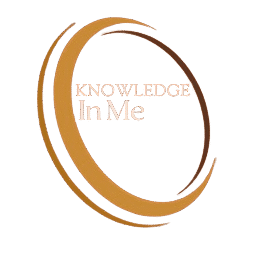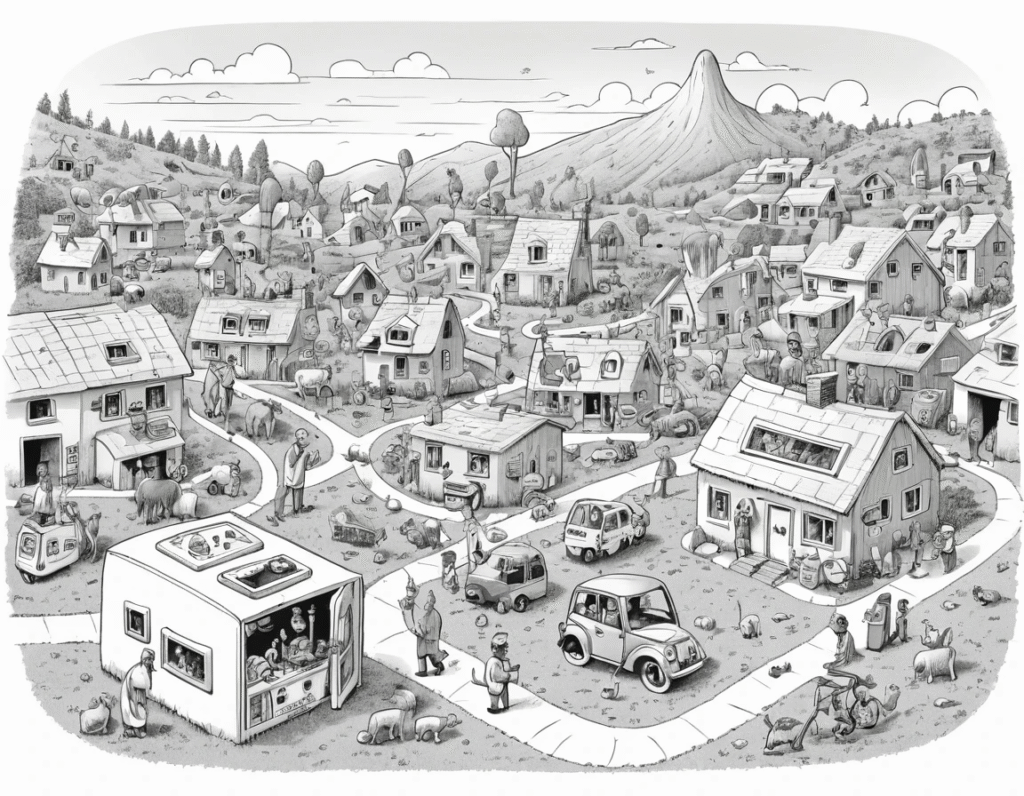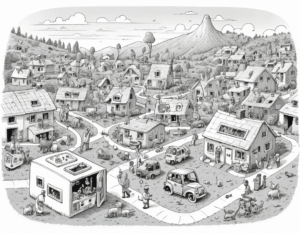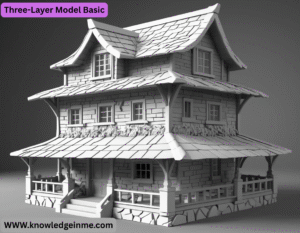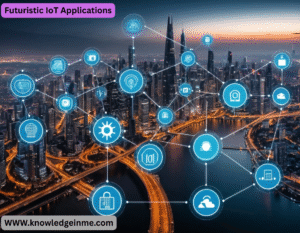Internet of Things over the internet. These devices range from everyday household objects to industrial machines, creating a smart, automated ecosystem.
Key Components of IoT:
- Devices/Sensors – Collect data (e.g., temperature, motion, GPS).
- Cloud Computing – Stores and processes data.
- Data Analytics – Extracts insights from collected data.
- User Interface – Allows users to interact with IoT systems (e.g., mobile apps, dashboards).
Applications of IoT:
- Smart Homes – Thermostats (Nest), lights (Philips Hue), security cameras.
- Healthcare – Wearables (Fitbit), remote patient monitoring.
- Industrial IoT (LLOT) – Predictive maintenance, smart factories.
- Agriculture – Soil monitoring, automated irrigation.
- Smart Cities – Traffic management, waste monitoring, smart streetlights.
- Retail – Inventory tracking, automated checkout (Amazon Go).
Challenges & Concerns:
- Security & Privacy – Vulnerable to hacking (e.g., Mirai botnet).
- Interoperability – Different standards and protocols.
- Scalability – Managing millions of connected devices.
- Power Consumption – Battery life for wireless sensors.
Future Trends:
- 5G & Edge Computing – Faster data processing at the source.
- AI & Machine Learning – Smarter decision-making in IoT systems.
- Digital Twins – Virtual models of physical IoT systems.
- Blockchain for IoT – Enhanced security and transparency.
IoT Architecture Layers
IoT systems are typically structured in 4 or 5 layers:
Three-Layer Model Basic
- Perception Layer – Sensors, actuators, and devices that collect data.
- Network Layer – Transmits data (Wi-Fi, Bluetooth, Zig bee, LORA, 5G).
- Application Layer – Processes data and delivers user services (e.g., smart home apps).
Five-Layer Model Advanced
- Perception Layer – Physical sensors and devices.
- Transport Layer – Communication protocols (MQTT, COAP, HTTP).
- Processing Layer – Edge/Fog computing for real-time analytics.
- Application Layer – Industry-specific solutions (e.g., healthcare, agriculture).
- Business Layer – Data visualization, decision-making, and monetization.
IoT Communication Protocols
Different IoT applications use different protocols based on power, range, and data needs:
Protocol Use Case Range Power Use
MQTT Lightweight messaging (IoT clouds) Internet-based Low
COAP Web transfer for constrained devices Internet-based Low
HTTP/HTTPS General web communication Internet-based High
Bluetooth (BLE) Wearables, smart home Short (~10m) Very Low
Zig bee Home automation (mesh networks) Medium (~100m) Low
LORA WAN Long-range, low-power (smart cities) Kilometers Very Low
5G High-speed, low-latency (autonomous cars) Cellular Medium- High
IoT Security Challenges & Solutions
Major Threats:
- Device Hijacking (e.g., Mirai botnet DDoS attacks).
- Data Breaches (unencrypted personal/industrial data).
- Physical Tampering (malicious access to sensors).
- Firmware Exploits (outdated IoT device software).
Security Solutions:
- Zero Trust Architecture – Strict device authentication.
- End-to-End Encryption (TLS, AES).
- Blockchain for IoT – Tamper-proof data logs.
- AI-Driven Anomaly Detection – Identifies unusual behavior.
IoT in Industry Real-World Case Studies
Smart Manufacturing LLOT – Industry 4.0
- Predictive Maintenance – Sensors detect machine wear before failure.
- Digital Twins – Virtual replicas of factories for simulation.
- Example: Siemens uses IoT to optimize production lines.
- Healthcare LOMT – Internet of Medical Things
- Remote Patient Monitoring – Wearables track heart rate, glucose levels.
- Smart Pills – Ingestible sensors monitor medication adherence.
- Example: Philips’ connected ICU systems reduce errors.
Agriculture Smart Farming
- Precision Agriculture – Drones & soil sensors optimize irrigation.
- Livestock Monitoring – GPS collars track cattle health.
- Example: John Deere’s IoT-enabled tractors.
Smart Cities
- Traffic Management – AI adjusts signals based on real-time congestion.
- Waste Management – Smart bins alert when full.
- Example: Barcelona’s IoT-powered streetlights save energy.
5. Future Trends in IoT
- 6G & Faster Connectivity – Near-instant data transfer (beyond 5G).
- Self-Healing Networks – IoT devices auto-detect and fix issues.
- Quantum IoT – Ultra-secure communication (future potential).
- Sustainable IoT – Energy-harvesting sensors (solar, kinetic).
- Advanced IoT Architectures: Beyond Layered Models
Fog & Edge Computing Decentralized Processing
- Why? Reduces latency by processing data closer to the source (e.g., on a factory floor or smart traffic light).
- Edge AI: Tiny ML (Tensor Flow Lite) runs machine learning directly on sensors (e.g., vibration sensors predicting equipment failure).
- Use Case: Autonomous vehicles process LiDAR data locally to avoid cloud delays.
Digital Twins + IoT
- Definition: Virtual replicas of physical systems updated in real-time via IoT sensors.
Applications:
- Manufacturing: Simulating production line changes before implementation.
- Healthcare: Personalized “twin” of a patient’s heart to predict arrhythmias.
Mesh Topologies Self-Healing Networks
- Protocols: Zig bee 3.0, Thread (Google/Nest).
- Advantage: If one node fails, data reroutes automatically (critical for industrial IoT).
Next-Gen IoT Protocols & Connectivity
A. 5G/6G & IoT
- Ultra-Reliable Low-Latency Communication (URLLC): <1ms latency for robotics.
- Network Slicing: Dedicated 5G bandwidth for IoT traffic (e.g., smart grids).
LPWAN Innovations
- NB-IoT (Narrowband IoT): Cellular-based, deep indoor penetration (e.g., smart meters).
- LORA WAN 2.4 GHz: Global compatibility for logistics tracking.
Matter Unified Smart Home Standard
- Backed by Apple/Google/Amazon: Allows cross-brand device interoperability.
- Uses Wi-Fi/Thread for seamless integration.
AI & IoT (ALOT): The Brain of Smart Systems
Embedded AI at the Edge
- Tiny ML: Machine learning models on microcontrollers (e.g., Arduino Nano 33 BLE Sense).
- Example: Wildlife cameras identifying endangered species without cloud uploads.
Federated Learning for IoT
- Privacy-Preserving AI: Devices train models locally and share only insights (not raw data).
- Use Case: Smart keyboards improving predictions without leaking user texts.
Autonomous IoT Systems
- Self-Optimizing Factories: AI adjusts robotic arms in real-time based on sensor feedback.
- Cognitive Cities: AI + IoT traffic lights predict congestion using historical + live data.
Cutting-Edge Security Frameworks
Post-Quantum Cryptography (PQC)
- Threat: Quantum computers could break RSA/ECC encryption.
- Solution: NIST-standardized algorithms (e.g., CRYSTALS-KYBER) for IoT firmware.
Hardware-Based Security
- Trusted Platform Modules (TPM): Secure cryptographic keys in hardware.
- Physical Unclonable Functions (PUFs): Device fingerprints to prevent counterfeiting.
Zero Trust for IoT
Principles:
- Never trust, always verify.
- Micro-segmentation: Isolate compromised devices (e.g., a hacked smart bulb).
- Tools: Software-Defined Perimeter (SDP), IoT identity management (X.509 certificates).
Futuristic IoT Applications
Swarm Robotics
- Example: Drone fleets for precision agriculture (e.g., pollination, pesticide spraying).
- Protocols: ROS 2 (Robot Operating System) over DDS for real-time coordination.
Bio-Integrated IoT
- Smart Implants: Glucose-monitoring contact lenses (Google Verily).
- Neural Dust: Millimeter-sized sensors monitoring brain activity.
Space IoT
- NASA’s DTN (Delay-Tolerant Networking): IoT for interplanetary communication (Mars rovers relaying data via satellites).
- Ethical Dilemmas & Governance
- Autonomous Weapons (IoT in Warfare)
- Issue: AI-powered drones making lethal decisions.
Data Sovereignty
- Conflict: IoT data stored in foreign clouds (e.g., EU vs. US Cloud Act).
- Solution: Localized fog computing + GDPR compliance.
Sustainability Challenges
- Problem: 50 billion IoT devices by 2030 = e-waste tsunami.
- Fix: Biodegradable sensors (e.g., cellulose-based circuits from Purdue University).
Hands-On: Building a Secure IoT Prototype
Hardware Stack
- MCU: ESP32 (Wi-Fi/BLE), Raspberry Pi Pico W.
- Sensors: DHT22 (temp/humidity), PIR motion sensor.
Software Stack
- MQTT Broker: Mosquitto (for lightweight messaging).
- Edge AI: Tensor Flow Lite on Raspberry Pi for object detection.
Security Steps
- Secure Boot: Cryptographically signed firmware updates.
- Network-Level: VPN (Wire Guard) for remote access.
- Data Encryption: AES-256 for sensor data at rest.
